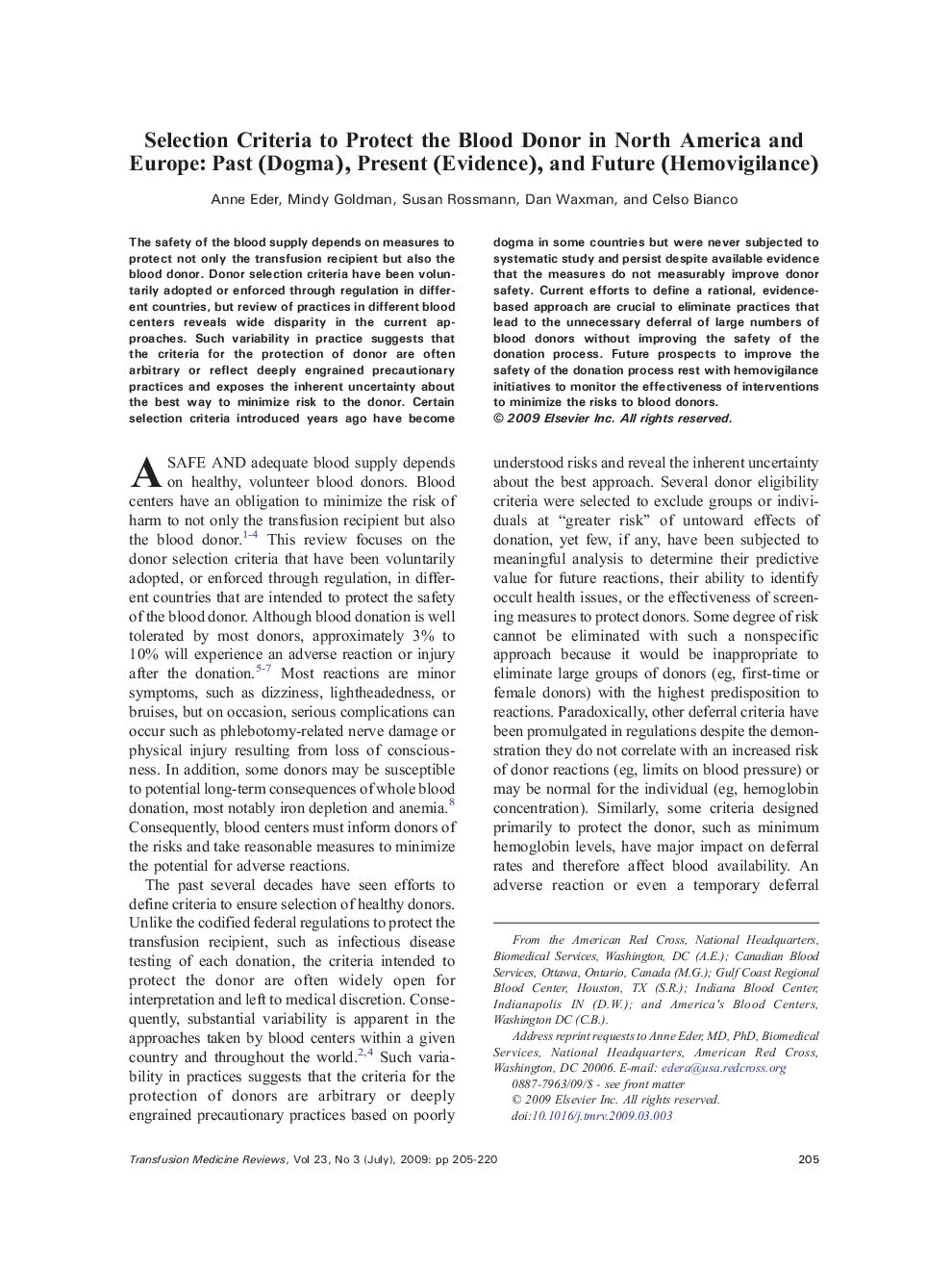| Article ID | Journal | Published Year | Pages | File Type |
|---|---|---|---|---|
| 3336995 | Transfusion Medicine Reviews | 2009 | 16 Pages |
The safety of the blood supply depends on measures to protect not only the transfusion recipient but also the blood donor. Donor selection criteria have been voluntarily adopted or enforced through regulation in different countries, but review of practices in different blood centers reveals wide disparity in the current approaches. Such variability in practice suggests that the criteria for the protection of donor are often arbitrary or reflect deeply engrained precautionary practices and exposes the inherent uncertainty about the best way to minimize risk to the donor. Certain selection criteria introduced years ago have become dogma in some countries but were never subjected to systematic study and persist despite available evidence that the measures do not measurably improve donor safety. Current efforts to define a rational, evidence-based approach are crucial to eliminate practices that lead to the unnecessary deferral of large numbers of blood donors without improving the safety of the donation process. Future prospects to improve the safety of the donation process rest with hemovigilance initiatives to monitor the effectiveness of interventions to minimize the risks to blood donors.
